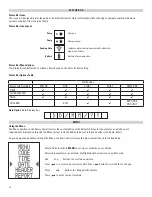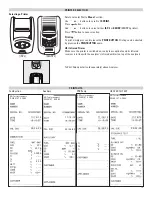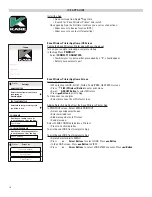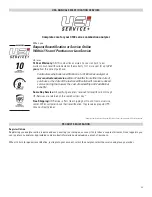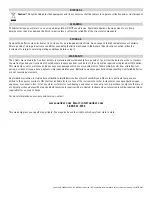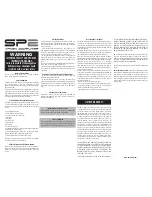
21
POWERING OFF
When you power off the analyzer, there is a 10 second purge.
Make sure you do not exceed the analyzer’s operating specifications. In particular:
• Do not exceed the flue probes maximum temperature (1112˚F)
• Do not exceed the analyzer’s internal temperature range
• Do not put the analyzer on a hot surface
• Do not exceed the water trap’s level
• Do not let the particle filter become dirty and blocked
View the displayed data to ensure that the stable operating conditions have been achieved and the readings are within the expected
range.
POST TEST
Remove the probe from the flue and allow analyzer to purge with fresh air
until readings return to zero. O
2
to 20.9%, CO to Zero (Be careful the probe
tip will be HOT).
GENERAL MAINTENANCE
• Re-certify your instrument annually to ensure it meets original performance specification
• Keep your instrument dry, if it gets wet, wipe dry immediately. Liquids can degrade electronic circuits
• Whenever practical, keep the instrument away dust and dirt that cause premature wear
• Although your instrument is built to withstand the rigors of daily use, it can be damaged by severe impacts.
• Use reasonable caution when using and storing this meter
PERIODIC SERVICE
WARNING
Repair and service of this instrument is to be performed by qualified personnel only. Improper repair or service could result in physical
degradation of the instrument. This could alter the protection from personal injury this meter provides to the operator. Perform only those
maintenance tasks that you are qualified to do.
COLD WEATHER PRECAUTIONS
It is important you keep your flue gas analyzer in a warm and dry place overnight
Electronic devices that become really cold, by being left in a vehicle overnight, suffer when taken into a warm room the next
morning. Condensation may form which can affect the analyzer’s performance & cause permanent damage. See operating and storage
temperature specifications.
Electrochemical sensors used in flue gas analyzers can be affected by condensation or water being sucked into the analyzer, as the
small apertures on top of sensors can become blocked with water, stopping sensors seeing flue gas. When this happens, oxygen or
carbon dioxide reading will display as “—” & sensors may be permanently damaged
If you think that your analyzer is affected by condensation or water ingress, it may be possible to rectify the problem yourself. Simply
leave the analyzer running in a warm place, with the pump ‘ON’ sampling fresh air for a few hours (use mains adapter/battery charger if
needed). If, after doing this, you still experience problems please contact our Service Center.
STATUS
FLUE 1
AUX
FLUE 2
TEMP
Combu
stion Analy
zer
C161
CO
C
O2
T
EM
P
Summary of Contents for C163
Page 25: ......




